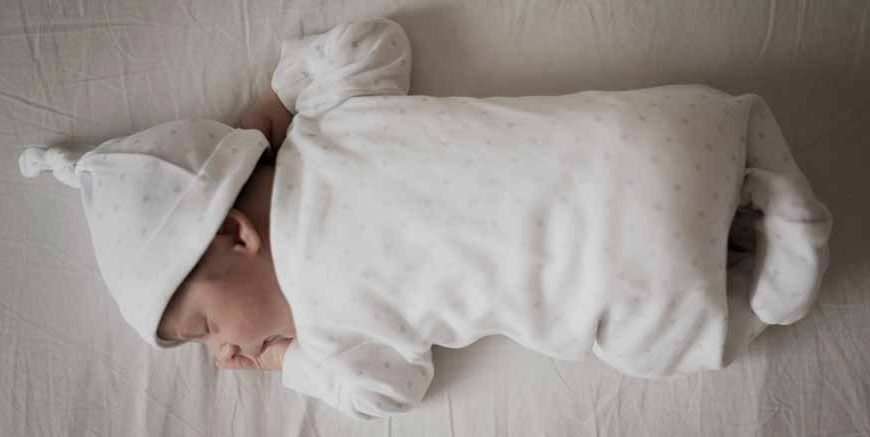Okay, let’s be honest: who hasn’t nudged little ones in the middle of the night to make sure they haven’t moved over or become entangled in the blankets? If this sounds familiar, you are far from alone:)
It turns out, baby sleep positions are a whole lot more nuanced than we’re led to believe. And let’s face it, who has time to sift through mountains of conflicting advice when you’re running on caffeine fumes and baby giggles?
So, grab that lukewarm coffee, and let’s talk about baby sleep positions, safe sleep environments, and how we can finally get your little ones to sleep soundly through the night.
Significance of Safe Sleep Positions
Creating a secure sleeping space helps minimise the probability of Sudden Infant Death Syndrome (SIDS), which is the leading cause of infant mortality between one month and one year old. Though the actual causes of SIDS are not yet known, certain sleeping postures can heighten an infant’s danger level. Adherence to safe slumber practices significantly cuts down this risk while promoting overall health as well as wellness among babies.
Healthy baby sleeping positions
Back is Best
According to the American Academy of Pediatrics (AAP), all children must be laid on their backs when put down to rest every time from birth up until one year old or even beyond, if possible so that they reduce chances of getting SIDs. When this is done, the kids’ air passages remain open, making them breathe effortlessly. Here are some tips:
During naps or at night, always place your child on his/her back in the crib;
If you notice that he/she has rolled onto another side, gently roll him/her back again onto its initial position (secure baby sleeping positions);
While placing her/him down, avoid laying her/him on either side or front part (safe baby sleeping positions).
On a Firm Sleep Surface
A baby should sleep on a firm and flat surface which has a fitted sheet tightly covering the mattress; avoid using any soft objects such as loose bedding, stuffed animals, blankets or pillows inside crib as these could lead to suffocation or overheating hazard.
Using a Light Blanket (Optional)
In case you choose to use a blanket, then make sure it only goes up until the chest area since this will prevent covering the baby’s head with it; after tucking the blanket tightly around him/her so that it doesn’t cover his/her face too much which can make breathing difficult for infants. Many paediatricians advise against introducing blankets until around one year old.
Unsafe Sleeping Positions for Babies
Stomach Sleeping
Getting your little ones to sleep on their tummies while sleeping increases the chances of Sudden Infant Death Syndrome. Children may find breathing difficult as sometimes airway passages get blocked by mattresses.
Side Sleeping
This is not recommended for newborn babies although it is less risky than tummy sleep position. During sleep, children may roll from being on either side onto their fronts thus increasing risk of getting affected by SIDS . If you see the kid laying sideways gently turn him back upwards(safe baby sleeping positions).
How to Deal With Common Worries
What if my baby prefers sleeping on his side?
Some babies may end up rolling over onto their sides during sleep time; if they were initially put down on their backs, then there is no issue with them sleeping like that (newborn infant sleeping position). But if you come across a child who has slept off lying sideways, just roll him back again onto his rear side.
My baby abhors laying on their back! They cry!
Infants might become fussy when placed flat on their backs for the first time. This is normal. Some things that may help soothe them include: shushing, rocking or sucking. Consistency is key; keep putting them down to sleep on their back (safe sleep positions for babies).
What about swaddling?
Swaddling your child to help them fall asleep can be similar to giving them a warm cuddle. It’s invaluable when they’re picky! However, please give their tiny legs and hips enough breathing room. When your baby begins to roll over, it’s time to take off the wrap. Go ahead and allow them to explore their newfound independence!
Is it okay if my baby sleeps in a swing or bouncer?
Swings and bouncers can be safe places for quick and short naps. However, they should not be used as regular sleep surfaces, as they may force your child into a SIDS-prone position. Always place your infant on his or her back to nap or sleep at night on a firm mattress.
What about sharing a bed with my baby?
In India, co-sleeping is a prevalent practice, however there are some concerns to be aware of, particularly for infants.
Although most medical professionals advise against co-sleeping, certain families may not be able to avoid it. Prioritise safety if you decide to co-sleep by putting your infant to sleep on their back on a hard surface and clearing their sleeping space of any soft materials.
Troubleshooting Sleep Problems
Why does my baby wake up so often at night? How can I get him/her to sleep longer stretches?
Newborns have naturally short sleep cycles, meaning they will wake frequently throughout the night, needing feedings. However, as they grow older, establishing consistent bedtime routines and age-appropriate nap schedules can help teach them how to go longer between wakings. Here are some tips:
Create a Calming Bedtime Routine: Here is a pro tip! You can start a relaxing bedtime routine 30-60 minutes before sleep. The routine could include gentle massages, playing soothing music, or rocking. Do this consistently, and Your baby will know when to wind down.
Establish a Consistent Sleep Schedule: Once your baby is around four months old, try putting him/her down for naps and bedtime at roughly the same time each day, even on weekends, which will help regulate his/her internal body clock, promoting longer stretches of uninterrupted nighttime slumber.
Night Feedings: Newborns and younger babies need to feed at night but as they grow older you can encourage strategies that enable them to fall back asleep without necessarily feeding again immediately after thus extending their sleeping hours. This may involve using comforting techniques such as patting them gently or shushing rather than rushing with milk right away.
Watch for Hunger Cues: If during any of those wake-ups your little one appears genuinely hungry then go ahead and offer a feed but if restless yet not necessarily showing signs of hunger try soothing him/her first before trying out milk.
Deal with Gas and Reflux Issues: In case gas or reflux is suspected as the cause behind discomfort leading to lack of good quality sleep consult with a healthcare provider who will offer appropriate advice accordingly.
Limit Daytime Napping: Lengthy daytime naps might interfere with overnight sleep therefore consider gradually reducing duration especially when he/she reaches certain milestones like sitting up unsupported or crawling etc.
Create Darkness in Sleep Environment: Make sure that where your baby sleeps, it’s dark enough since this enhances melatonin production, which is necessary for regulating sleep
Be careful with white noise: Some infants sleep better with it, but not all. Try to keep the volume down, and don’t put the machine right next to the crib.
Keep in Mind: Each child is unique; their sleeping habits can be different too. Stay calm, keep doing what you’re doing every night and day, ask for help from a healthcare professional if needed concerning their sleep patterns.
We hope you learned a great deal about newborn baby sleeping positions with the help of this blog.
For more such interesting and insightful blogs, visit our blogs section now!
Source:
How to Keep Your Sleeping Baby Safe: AAP Policy Explained – HealthyChildren.org
Homepage | Safe to Sleep (nih.gov)














